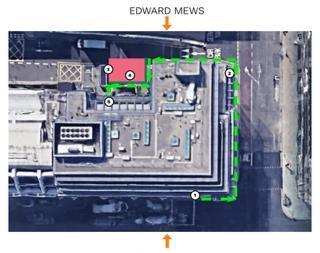With congestion and soaring house prices forcing people out of London, is it any wonder that the regions are booming? This podcast finds that as major investment piles into Britain’s regions, schools and hospitals have been the anchors for regeneration projects designed to help towns left behind during the boom years.
Large-scale regeneration is putting the UK’s regional cities on the map once again, helping to drive local economic growth and bring Britain’s ‘forgotten’ cities back on a par with London, a panel of experts told Property Week on a recent RESIcast.
According to the Centre for Cities’ Outlook 2019 report, the population of many regional urban centres has doubled since 2002, while the country’s population as a whole has increased by just 10%.
“The UK’s regional cities were hit hard by the 2008 financial crisis and they took a little longer to recover in comparison to London,” says David Reid, director at Rowan Asset Management. “While London is still incredibly expensive as a place to live and to work, regional cities are once again creeping up in terms of value.”
Fundamental to many regeneration schemes is harnessing wellbeing and placemaking. Rowan’s Reid says these concepts are becoming central to many regeneration developments.
“The whole agenda around delivering sustainable urban places for people to live and work and play that engage properly with local communities from the outset is something that we’re seeing a lot of and I think we’re going to see a lot more play out over the next few years in buildings being developed,” he says.
Ken Dytor, executive chairman at Urban Catalyst, agrees. “There’s a lot of talk about place, but what is it? I think social-infrastructure-led development is actually the future,” he says.
Nick Riley, board director at Whittam Cox Architects
David Reid, director at Rowan Asset Management
Ken Dytor, executive chairman at Urban Catalyst
Andrew Teacher, founder at Blackstock Consulting
“Place is actually about how you put together the infrastructure, the houses, the healthy living environment and the transportation and create that into a place whereby the houses can be built and people can live and function effectively,” Dytor adds.
Urban Catalyst recently secured planning for a £1bn revamp of Purfleet town centre, which will see a new media and creative hub established along with thousands of homes, to be delivered by joint venture partner Swan Housing Association.
Nick Riley, board director at Whittam Cox Architects, agrees with Dytor on the importance of wellbeing and place, adding that the NHS Healthy New Towns network is an example of how these concepts can ultimately help bring about real social change.
“Professor Malcolm Grant who set up the organisation said something quite interesting, which was that the fourth-largest cost to the NHS at the moment is poor-quality housing. That’s after smoking and not eating correctly and not doing enough exercise. It’s not just about new houses that are built poorly and are poor quality with damp. It’s about mental wellbeing as well. So the social effects and the cost to the NHS of poor-quality housing are absolutely enormous. Hence why this network was set up to try to support better-quality housing.”
You can listen to this podcast via iTunes or Spotify or SoundCloud or through the player above. This podcast was produced by Blackstock Consulting [www.blackstock.co.uk] founder Andrew Teacher and you can Tweet your views @andrewjteacher and @RESIevent






























No comments yet